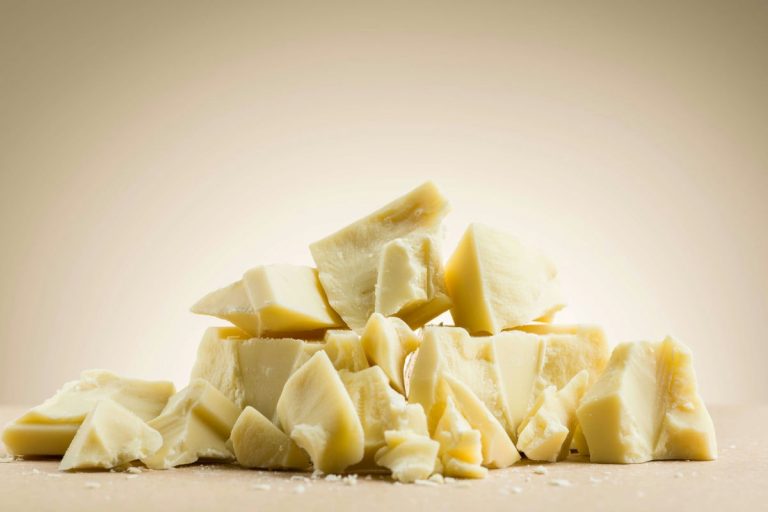
The world of chocolate offers a wide variety, ranging from pure cocoa to processed chocolate. The three main types we will compare are white chocolate, dark chocolate, and milk chocolate. Each has distinct characteristics that define not only their taste but also their chemical composition and impact on our health.
Dark chocolate is mainly composed of cocoa mass and cocoa butter, with a small amount of sugar. This high concentration of cocoa gives dark chocolate not only an intense and bitter flavor but also a richness in flavonoids, which are antioxidants beneficial for cardiovascular health and reducing inflammation. Dark chocolate is often appreciated by those seeking to maximize health benefits while having an intense taste experience.
Milk chocolate, on the other hand, contains less cocoa mass, a moderate amount of cocoa butter, and a higher amount of powdered milk and sugar. This type of chocolate is sweeter and creamier, making it very popular, especially among children. Milk chocolate also contains flavonoids but in smaller quantities than dark chocolate, and its caloric intake is often higher due to the added sugar and fat content.
White chocolate, distinct from the other two, does not contain cocoa mass, which eliminates any bitterness associated with cocoa flavonoids. It is mainly composed of cocoa butter, powdered milk, and sugar. The flavor is therefore sweeter and creamier, attracting a specific audience. However, its lack of antioxidant compounds present in cocoa mass makes it less beneficial from a nutritional perspective.
These distinctions are crucial for understanding the specific advantages and disadvantages of white chocolate compared to other types.
When comparing white chocolate to other varieties, several aspects stand out as significant advantages, particularly in terms of taste, tolerance by certain individuals, and culinary application.
The first undeniable advantage of white chocolate lies in its sweetness and its ability to appeal to a broad audience. The absence of cocoa mass eliminates the bitterness often associated with dark chocolate. Consequently, white chocolate is much more accessible and popular among those who do not appreciate the intensity of dark chocolate. This sweetness and creaminess also make it an excellent choice in the making of desserts, where a subtle and sweet flavor is required to balance other more pronounced ingredients.
From a dietary perspective, although white chocolate does not have the flavonoids of dark chocolate, it can still represent a safer choice for certain sensitive individuals. Children and the elderly, for example, often find white chocolate more acceptable due to its sweetness and creaminess. Additionally, people with certain intolerances to cocoa may find in white chocolate a pleasant alternative, although this consideration depends on individual tolerance to cocoa butter.
White chocolate also offers great versatility in the culinary field. Its cocoa butter composition gives it a melting texture, ideal for pastry. Used in ganaches, mousses, glazes, and sauces, white chocolate brings creaminess without adding the bitterness of dark chocolate or the milky richness of milk chocolate. This allows chefs to achieve more nuanced flavor profiles and create balanced and complex desserts.
Finally, white chocolate often has better long-term preservation compared to its counterparts rich in cocoa mass. Cocoa butter, being less prone to oxidation than cocoa mass, extends the product’s shelf life and maintains its quality for a longer period.
Although the health benefits are not as pronounced as those of dark chocolate, white chocolate can compensate for this lack with its universal taste acceptability and great culinary versatility.
Despite its obvious advantages in terms of sweetness and culinary flexibility, white chocolate also presents several significant disadvantages compared to dark chocolate and milk chocolate.
The first major disadvantage of white chocolate lies in its nutritional composition. Unlike dark chocolate rich in health-beneficial flavonoids, especially antioxidants, white chocolate offers virtually no advantage in this regard. The absence of cocoa mass, which contains these compounds, deprives white chocolate of proven benefits for cardiovascular health and inflammation reduction. Therefore, for those looking to incorporate chocolate into their diet to improve health, white chocolate would not be a wise choice.
Another downside is the high sugar and fat content. White chocolate is rich in cocoa butter and sugar, making it more caloric. Excessively consumed, it can contribute to weight gain and other health issues related to a diet rich in sugars and saturated fats, such as diabetes and cardiovascular diseases. This composition makes white chocolate less of an occasional guilty pleasure and more of an indulgence to be consumed in moderation.
From a culinary point of view, although white chocolate is prized for its sweetness, it can sometimes limit creative possibilities. Its flavor being milder than that of dark or milk chocolate, it sometimes lacks depth and aromatic complexity, which can be necessary in certain elaborate dessert or confectionery recipes. Excessive use of white chocolate in a recipe can result in bland or overly sweet outcomes, which is not desirable for discerning palates or dishes requiring a subtle balance of flavors.
Finally, white chocolate is also more sensitive to high temperatures. Cocoa butter makes white chocolate more prone to melting and separation under heat. This can pose challenges when making desserts requiring precise temperature manipulation, such as mousses or glazes.
In conclusion, although white chocolate has its place in the gastronomic world for its melting texture and sweet taste, its disadvantages in terms of health, nutritional composition, and culinary flexibility make it a less favorable choice compared to dark and milk chocolate. It is therefore crucial to consume it in moderation and understand the limitations it imposes to make informed choices, both for health and culinary arts.